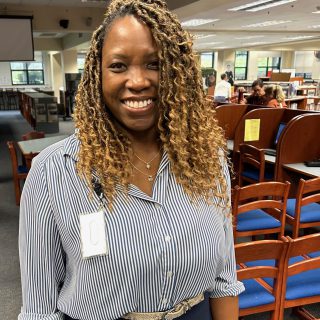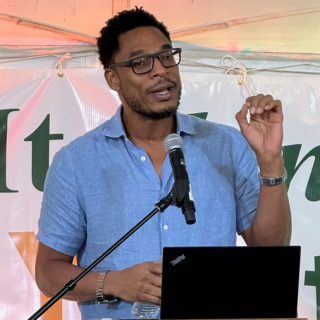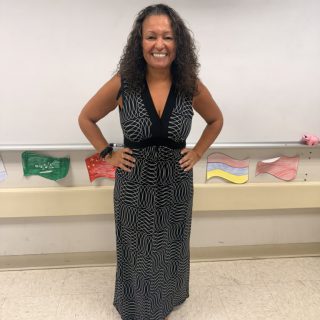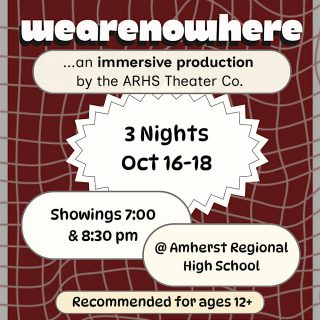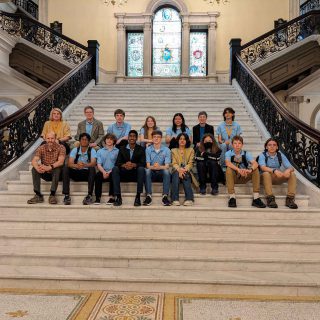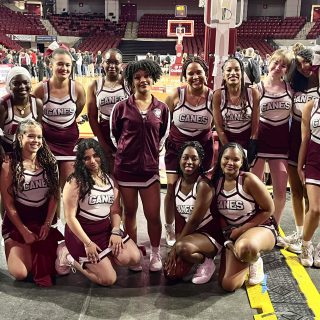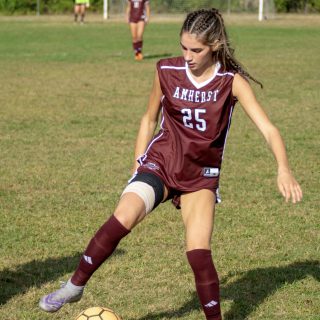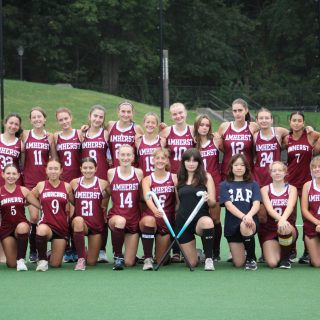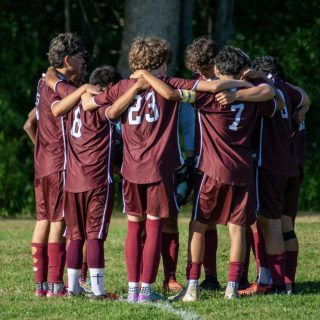ELL department bemoans the loss of beloved long-time teacher, Stephani Lopez, buoys students
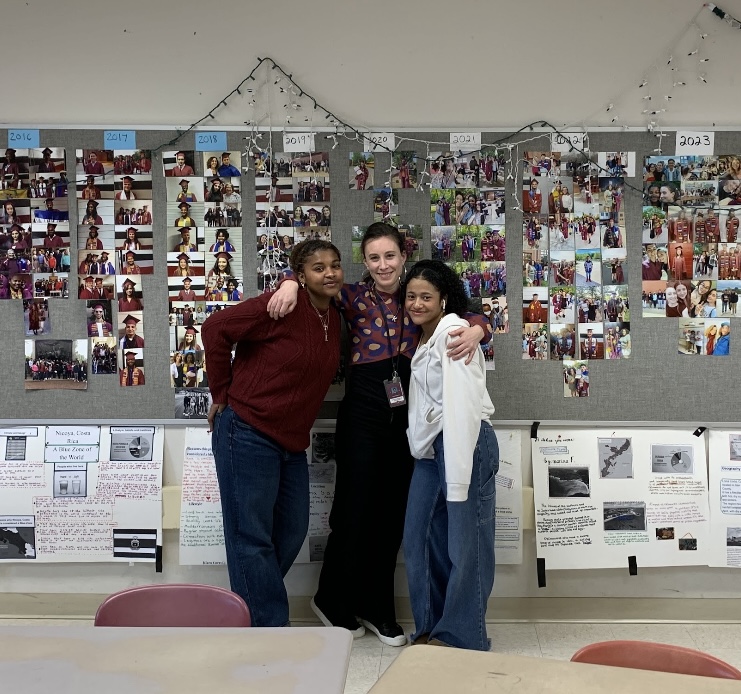
Ashleigh Sayer, Head of the English Language Learning (ELL) department at ARHS, said that for years, she and her ELL colleague Stephani Lopez have offered support in learning academic English to around 50 students. But Lopez’s recent decision to leave the classroom has led to some temporary changes in how that programming is delivered, as well as hopes for more stability in the fall of 2025.
According to Sayer, ARHS students’ fluency in the ELL program ranges from those with a few years of English speaking and writing experience to those with none at all. Classes in the ELL department allow students to gain the 16 necessary credits to fulfill their English requirements for graduation. Additionally, credits for social studies may also be earned, though not as many.
“In our program, we have students whose siblings will come through the program [one after another], or their cousins,” said Sayer, who loves the “family” aspect to the program that connects English language learners. In the classroom, Sayer even posts pictures and years of graduation of students who have passed through the program. “Students who are new often come and say, ‘Oh my god, that’s my cousin! I didn’t know he went here,” or “that’s my brother.”
Nisaya Moczo, a senior at ARHS, described the wall and the program as full of “memories to look back on.”
In ELL classes, teachers teach in English, as that is the target language of the students. For the newcomers in the program, bilingual paras and interpreters help clarify points. Sayer said that for “low beginner levels,” she understands the importance of not talking all the time and not providing reading material constantly, and relies on “more on gestures and images, and hands-on activities that allow them to make meaning in their own way and in their own time.” The newcomers to the program are mainly Spanish-speaking students.
In addition to classroom learning, Sayer and Lopez regularly took students on various field trips. “One time we took a trip to New York and we slept there overnight. It was so fun,” said Moczo. Students visited Times Square and rode the subway. They have also had a few trips to Boston, as well as college visits.
Mid-year, Lopez made the tough decision to leave ARHS after six years in the district. Sayer said that Lopez “was looking for changes in her life. She moved to California for an adventure, better weather, and to be with some friends. She loved working here, but felt it was time to move on.”
The ELL program is a place of comfort to many students, and Lopez was a huge part of that culture. “Ms. Lopez was a safe spot, and Ms. Sayer is, too. People from the [ELL] community [could] go to her without being judged or anything,” said Kiara Correia, a senior at ARHS.
“Ms. Lopez was so welcoming. She just wanted everybody to feel welcome. And she was so good at just making us feel like we could go there to talk about anything to her, and making sure we were all okay. She was also really good at making sure we were doing our work too,” said Moczo. “Everybody is sad about it, and everybody misses her.”
Sayer said that having two teachers is ideal for the department. “It’s not just about the ability to do it, you need a lot of bandwidth emotionally, intellectually, mentally [to provide loving support for ELL students], and having two people allows the department some balance,” she said.
“It’s also nice to have another person in the department who is different, who offers another perspective, another side, and we had that with Ms. Lopez,” she said, noting that “the amount of passes I have to sign, papers I need to read, missing assignments that I need to address [can be overwhelming],” said Sayer.
Paras, students, and faculty have been working to keep the program going despite Lopez leaving.
In the ELL department, there are four paras. “I generally have one para in my room,” said Sayer, “although they are really there to support ELL students in classes outside of the department, like science, math, and health.”
One of the paras, Violeta Hernandez, is currently covering Lopez’s classes. She knows the students well, knows the classes well, and has been in the community for many years with the ELL department.
“Our paraeducators are a blessing because they are fantastic. They are great human beings, they really care about the students, they are multilingual, and they really want to see the program and the students be successful,” she said. But, Sayer noted, Hernandez is not certified as an ELL teacher. “As an interim solution,” Sayer said, “that it is great, but she is needed in other places such as math and science classes, and now that she is covering Lopez’s classes, there can be [gaps in support] in math and science classes.”
In addition to the help of paraeducators such as Hernandez, Jane Mudie, the Math Department Head, has been continuing to provide math help to ELL students with her ELL Math class that is tailored to meet individual students’ needs based on their current mathematical skills.
“They may come in, and they have basics like they know how to add, subtract, multiply, and divide. And that’s it,” said Mudie. “So then we have to take that student and individualize a program to try to catch them up as quickly as we can. And that’s no fault of their own, it’s just whatever their circumstances were.”
Mudie said that working to teach math and language simultaneously is rewarding. “It just brings me joy to teach ELL students. They are so wonderful. They have so many things to offer, and they really want to learn,” she said. Additionally, she said that the students are very supportive of each other.
Students in the program have been a source of support recently, as well. “I have a number of seniors who have been in the program for four years,” said Sayer. “We are very close. One of them is even my TA in my history class, and they really step up in their leadership roles!”
Sayer noted that they are so helpful in supporting students who need extra guidance when she is busy helping other students.
Sayer said she feels really lucky that our administration is supportive of the program in spite of the fact that we are small. Ms. Gromacki, Mr. Sadiq, and Ms. Camera have always kind of believed in my professional abilities to decide if we needed someone here,” ultimately deciding to rehire for Lopez’s open position.
Members of the program are hopeful that a new teacher can maintain a sense of community that the program has fostered over these many years.
“We are not just looking for candidates who would be strong, we want someone amazing. We want this department to flourish,” said Sayer. Sayer was originally concerned that the position of another ELL teacher would be cut or reduced to 60% next year. However, she said that there will be two full-time ELL teachers next year.
“I just hope the new teacher understands the students and where they are coming from,” said Correia, also mentioning that she hopes the new teacher also “brings snacks.” When asked about their hopes for the future of the program, students said that they hope the ability to form a community stays. Moczo hopes that the program “continues to have a bond, because in the 9th grade, we had such a close community. I just really hope that it stays like that for ongoing years.”
“We see so many family members from different families that when you have a teacher who stays for years and years, you get to see the evolution of that immigrant family in Amherst over time,” noted Sayer. “To me, it’s really incredible.” She is hopeful ARHS will hire a teacher who is not only qualified to do the job and wants to do the job, but also “wants to stay here and make a real difference and a real impact.”
While she misses Lopez a lot, she knows there’s going to be “someone great out there.”

